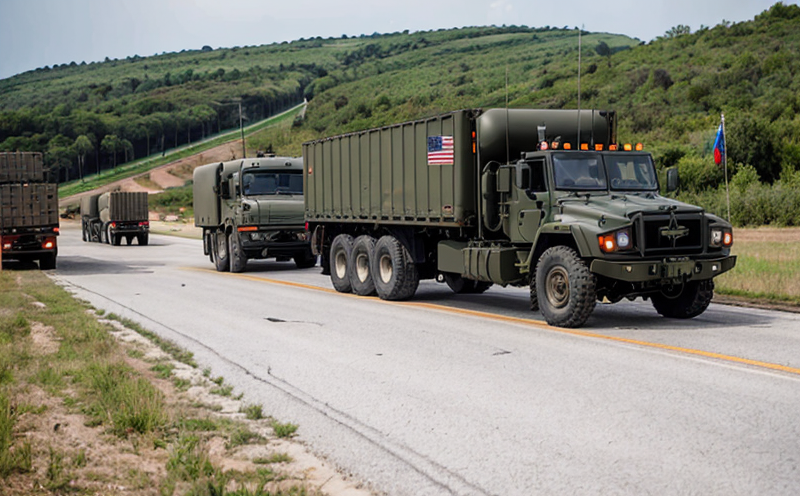Military Logistics and Support Equipment: A Critical Component of Modern Warfare
In modern warfare, military logistics and support equipment play a crucial role in ensuring the success of military operations. The ability to transport troops, supplies, and equipment quickly and efficiently is essential for maintaining a strong military presence on the battlefield. This article will delve into the world of military logistics and support equipment, highlighting its importance, key components, and the latest developments in this field.
Understanding Military Logistics
Military logistics refers to the planning, coordination, and execution of the movement of troops, supplies, and equipment within a theater of operation. It involves the management of resources such as fuel, ammunition, food, water, and medical supplies, as well as the maintenance and repair of vehicles and equipment. Effective military logistics is critical for maintaining a strong military presence on the battlefield, as it enables units to remain operational and respond quickly to changing circumstances.
Key Components of Military Logistics
Transportation: This includes vehicles such as trucks, tanks, helicopters, and aircraft, which are used to transport troops, supplies, and equipment. The transportation network must be able to handle a wide range of cargo, including bulk items such as food and fuel, as well as specialized equipment such as medical supplies and ammunition.
Supply Chain Management: This involves the coordination of supply routes, inventory management, and distribution of resources within the theater of operation. Supply chain management ensures that the right resources are in the right place at the right time to support military operations.
Maintenance and Repair: This includes the maintenance and repair of vehicles and equipment to ensure they remain operational. Maintenance and repair facilities must be able to handle a wide range of tasks, from routine maintenance to complex repairs.
Types of Military Logistics Support Equipment
Tractors and Trailers: These are used to transport heavy loads such as artillery pieces and fuel tanks.
Tank Transporters: These are used to transport tanks and other tracked vehicles within the theater of operation.
Helicopters: These are used for transporting troops, supplies, and equipment over long distances or in areas where roads are impassable.
Aircraft: These are used for transporting troops, supplies, and equipment over long distances or in areas where roads are impassable.
Detailing the Logistics of Military Operations
Here are some key points to consider when examining military logistics:
Theater of Operation: This refers to the geographical area in which military operations take place. The theater of operation can be a country, region, or even an entire continent.
Logistics Chain: This is the chain of supply and transportation that connects the source of supplies to the point of consumption on the battlefield.
Distribution Network: This is the network of roads, rails, and airfields used to transport troops, supplies, and equipment within the theater of operation.
Detailing the Maintenance and Repair of Military Equipment
Here are some key points to consider when examining maintenance and repair:
Equipment Condition: This refers to the overall condition of military equipment. Regular maintenance is essential for maintaining the reliability and performance of equipment.
Maintenance Schedules: These schedules outline specific tasks that must be performed on a regular basis, such as oil changes or tire rotations.
Repair Facilities: These are facilities where equipment can be repaired in the field or at a central location.
QA Section
Q: What is the difference between military logistics and supply chain management?
A: Military logistics refers to the planning, coordination, and execution of the movement of troops, supplies, and equipment within a theater of operation. Supply chain management involves the coordination of supply routes, inventory management, and distribution of resources within the theater of operation.
Q: What types of vehicles are used for military transportation?
A: Vehicles such as trucks, tanks, helicopters, and aircraft are used to transport troops, supplies, and equipment. The type of vehicle used depends on the terrain, cargo weight, and speed required for a particular mission.
Q: How does maintenance and repair fit into the logistics chain?
A: Maintenance and repair is an essential part of the logistics chain as it ensures that vehicles and equipment remain operational. Regular maintenance schedules help to prevent breakdowns and reduce downtime.
Q: What types of support equipment are used in military operations?
A: Support equipment includes tractors and trailers, tank transporters, helicopters, aircraft, and maintenance facilities such as repair shops and depots.
Q: How does the theater of operation affect logistics planning?
A: The theater of operation has a significant impact on logistics planning. Logisticians must consider terrain difficulties, climate conditions, and potential hazards when developing a logistics plan.
Q: What is the purpose of inventory management in military logistics?
A: Inventory management involves tracking supplies and equipment within the theater of operation. This helps to ensure that resources are available when needed and minimizes waste.
Q: How do modern communication systems impact military logistics?
A: Modern communication systems have greatly improved the speed and efficiency of military logistics. Global positioning systems (GPS), satellite communications, and cellular networks enable logisticians to track supplies and equipment in real-time.
Conclusion
Military logistics and support equipment are critical components of modern warfare. Effective planning, coordination, and execution of logistics operations can mean the difference between success and failure on the battlefield. Understanding the key components of military logistics, including transportation, supply chain management, and maintenance and repair, is essential for maintaining a strong military presence. This article has provided an in-depth look at the world of military logistics and support equipment, highlighting its importance and providing detailed explanations of key concepts.

































